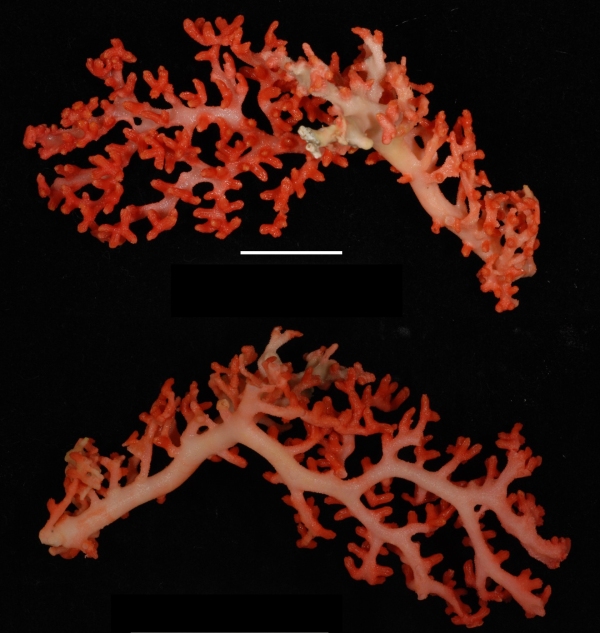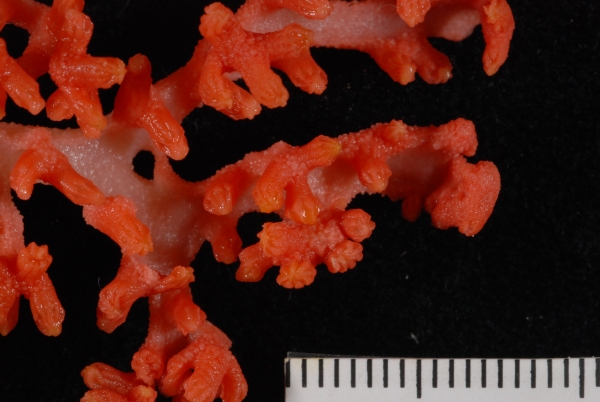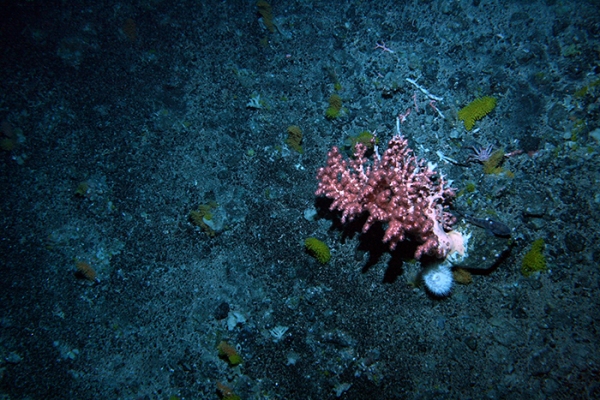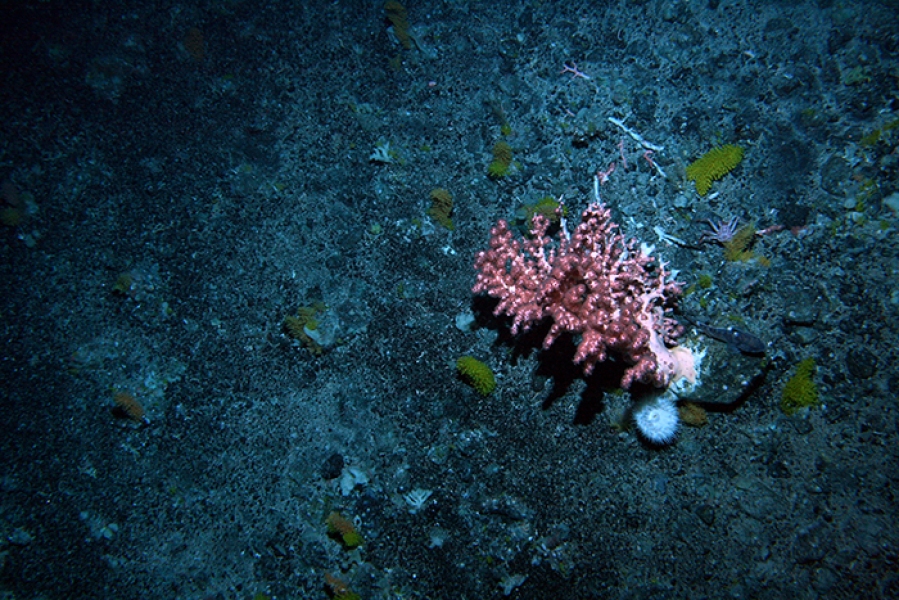We recently featured another precious red coral , as our ‘Valentines Critter’ back in February (see Hemicorallium - CotW 109). This week, let us celebrate the closely related genus Corallium in honour of our visiting scientist Tzu Hsuan Tu from the National Taiwan University in Taipei.
She is visiting this week to examine our collection of precious corals for her worldwide comparison of the about 25 species known. This work contributes to her nearly completed PhD and is in collaboration with our friends working in this field, notably Dr Nestor Ardila and Professor Juan Sanchez from Universidad de los Andes, Bogotá, Columbia who recently published on this group (1). Spot them both in this group photo from a NIWA workshop in 2008 (2).
As the common name suggests, the precious red corals are typically deep red in colour. This species collected from a Macquarie Ridge seamount southwest of New Zealand between 1150-1270 metres is no exception. The scale is 2 cm long.
The corallids (family Corallidae, i.e. Corallium and Hemicorallium) are somewhat unusual representatives of the gorgonian corals in that their skeleton is built much more solidly than other more typical gorgonians. Their relatives include the bubblegum corals (see CotW 35) but their skeleton still feels much more porous and spongy compared to Corallium and one could be forgiven for thinking that corallids belong to the hard corals. However, this can be easily solved since Corallidae belong to the octocorals (where each polyp bears 8 small tentacles) while hard corals, or Scleractinia, belong to the hexacorals (where each polyp bears 6 small tentacles).
A close-up of the colony above clearly shows the polyps and while they are not extended, the eight small tentacles are clearly visible, making it easy to classify Corallium as an octocoral.
For close-up images of the beautifully extended polyps of a Corallium, take a look at this photo gallery and the video of the shallow-water relative Corallium rubrum known from the Mediterranean and eastern Atlantic Ocean at depths of 7 to 300 metres.
Photo gallery:
http://www.arkive.org/red-coral/corallium-rubrum/
Video:
http://www.arkive.org/red-coral/corallium-rubrum/video-00.html (BBC Natural HIstory Unit, archive).
This beautiful image from a neighbouring Macquarie seamount to the one the specimens above was from shows a large colony of Corallium, probably around 30-40 cm tall. Note the fish sheltering besides the colony and spot the king crab on a mission behind as well.
Because of their beautiful colour and lustre Corallium precious corals have been highly valued for jewellery since ancient times and are still harvested in the western Mediterranean Sea and in the western north Pacific Ocean. But because of over-harvesting, they are considered threatened in many places and their trade is regulated under the Convention on International Trade in Endangered Species of Wild Fauna and Flora (CITES). Find lots of interesting information about the biology, distribution and management of precious corals in this report from the International Workshop on Corallium Science, Management, and Trade from 2009 (3).
References
1) http://www.biomedcentral.com/1471-2148/12/246
3) International Workshop on Corallium Science, Management, and Trade (2009): http://www.nmfs.noaa.gov/pr/pdfs/nmfsopr43.pdf




